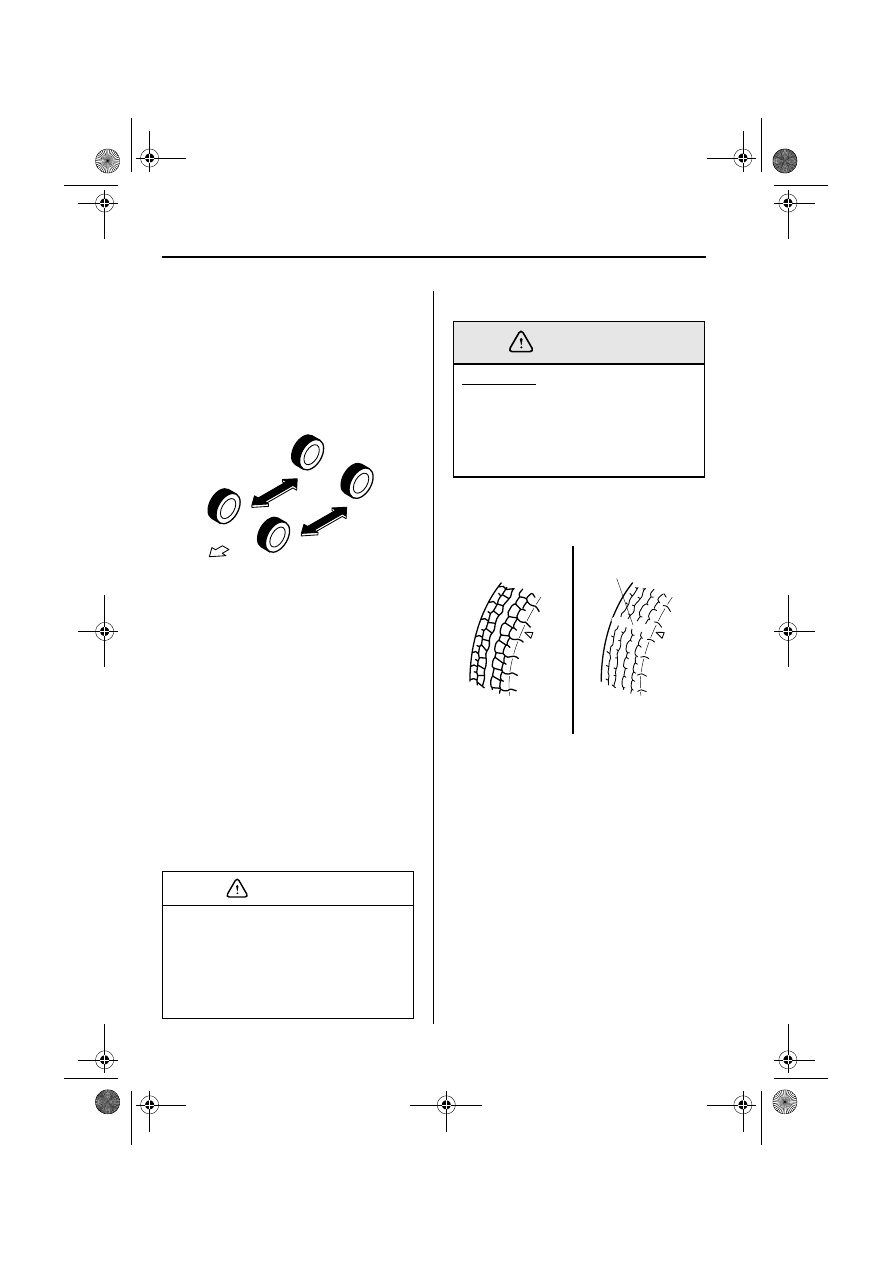Mazda Millenia (2002 year). Instruction - part 13

8-26
Maintenance and Care
Owner Maintenance
▼ Tire Rotation
To equalize tread wear, rotate the tires
every 6,000 km (3,750 miles)/12,000 km
*
(7,500 miles) or sooner if irregular wear
develops. During rotation, inspect them
for correct balance.
*
Canada
Also, inspect them for uneven wear and
damage. Abnormal wear is usually caused
by one or a combination of the following:
• Incorrect tire pressure
• Improper wheel alignment
• Out-of-balance wheel
• Severe braking
After rotation, inflate all tire pressures to
specification (page 10-6) and inspect the
lug nuts for tightness.
▼ Replacing a Tire
If a tire wears evenly, a wear indicator will
appear as a solid band across the tread.
Replace the tire when this happens.
You may need to replace it before the
band is across the entire tread.
Rotate unidirectional tires and radial
tires that have an asymmetrical tread
pattern or studs only from front to rear,
not from side to side. Tire performance
will be weakened if rotated from side
to side.
Front
Do not include (TEMPORARY USE ONLY
spare tire) in rotation.
CAUTION
Worn Tires:
Driving with worn tires is dangerous.
Reduced braking, steering, and
traction could result in an accident.
Always use tires that are in good
condition.
WARNING
New tread
Worn tread
Tread wear indicator